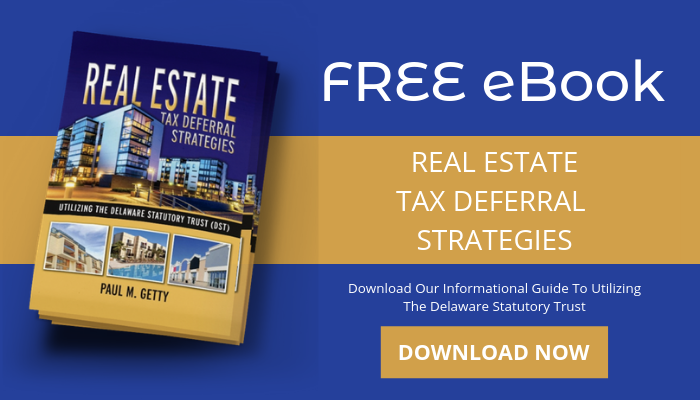Real estate investors who own properties in areas subject to natural disasters including hurricanes, tornadoes, fires, earthquakes, etc. or in areas where the government may confiscate properties to build new infrastructure should become familiar with the 1033 exchange.
Generally, when a property is impacted by a natural disaster, there is initially a loss of value. However, many investors may realize a taxable gain if insurance proceeds or other compensation is received that exceeds the adjusted tax basis of the property. Also, if the government takes-over a property through an eminent domain action, the compensation received by the owner will potentially be subject to taxation.* These unanticipated events are often referred to as “forced conversions.”
The 1033 exchange became part of Internal Revenue code in 1921 and provides a means for investors to defer taxes that may otherwise be owed when their properties are damaged or destroyed or taken over by governmental actions. It is conceptually like the 1031 exchange but with several important differences that we will describe in this blog.
Investors who do not utilize the 1033 exchange would be obligated to pay taxes on the capital gains and recovered depreciation in the same year that they received the proceeds. This could eat-up as much as 20-40% of the funds received. By following the 1033 exchange rules both depreciation recapture and capital gains taxes can be fully deferred and allow investors to protect themselves from potential downsides in a forced conversion.
1033 Exchange Versus a 1031 Exchange
Timeframe
The 1033 exchange allows a significant amount of time for an investor to complete their exchange. Rather than the strict 45/180-day limits in the 1031 exchange, an investor will have at least 2 years and possibly longer to complete the reinvestment of their funds. Exceptions to the 2-year timeframe may be granted by governmental decree or by an investor requesting and being granted an exception.
No Identification Limits
The investor in a 1033 exchange is not limited in the number of properties they may consider for reinvestment purposes nor be held to a formal identification process as is the case in a 1031 exchange. An investor is free to consider any number of properties or investments to meet 1033 requirements and the exchange is finalized after the investment of funds is finally completed.
No Qualified Intermediary is Required
The 1033 exchange investor is not required to engage a third-party Qualified Intermediary and can take direct control of their funds while they investigate reinvestment options. The funds can be placed in the investor’s bank account or invested in other interim investment vehicles e.g., CDs, money market, investment account, etc.**
Restrictions on Replacement Properties
If an investor is completing a 1033 exchange for a property impacted by a disaster, they are required to reinvest in a property that is “similar or related in service or use” to that property. As an example, if the property were a restaurant owned and managed by the investor, they would not be allowed to reinvest funds in building a new parking garage.
However, if the property was taken over by the government or impacted in a federally declared disaster area, the investor is permitted to use the more liberal “like-kind” replacement property standard found in the 1031 exchange.
Properties structured as Delaware Statutory Trusts (DSTs) can be used as 1033 exchange replacement properties. We see some investors being lulled by the longer allowed timeframe of the 1033 exchange and delay selecting replacement properties until it becomes close to impossible to find suitable options. DSTs can be good options to consider if time is running short.
Option to Obtain Tax-Free Cash
A 1033 investor is required to reinvest their net equity and have the same or greater debt in their replacement properties as compared to their impacted property. However, unlike a 1031 exchange, they can substitute added debt for equity and potentially pull money out of the exchange tax-free. The investor is only required to replace the full value of impacted property. For example, if an investor had a property worth $1M with a $200,000 loan, they could reinvest in a new property worth $1M and finance it with a larger $500,000 loan and take $300,000 out of the exchange. The $300,000 would be regarded as loan proceeds which are not taxable. The funds could be used in any manner the investor wishes.
_____________________________
Summary
The 1033 exchange can be an excellent option to consider when an investor is faced with an unexpected loss and tax liability that may arise from a disaster or loss of a property by governmental action. More lenient timeframes and the investor’s ability to control funds can help to take the sting out of unexpected and unwelcomed events. However, there are added complexities to consider such as in determining suitable replacement property options and exploiting cash-out scenarios that are likely to require the inputs of knowledgeable tax and legal advisors.
Please note that the summary presented in this blog is meant to only provide an overview of the 1033 exchange and does not fully cover all related details
For more information on 1033 exchanges or other real estate tax deferral and replacement property options including DSTs, please contact us.
Help Save 1031 Exchanges
* Eminent domain is the right of a government to take over privately owned property for public use with payment of compensation to the owner.
** It is prudent to invest funds in less risky and liquid investments since the funds will need to be fully invested to receive a full deferral.









Your Comments :